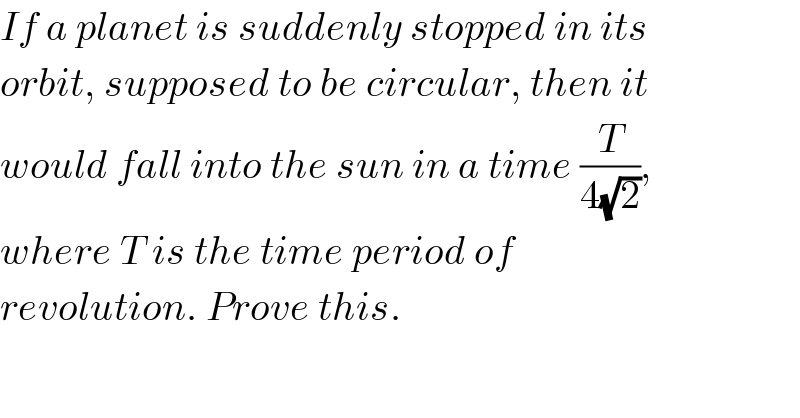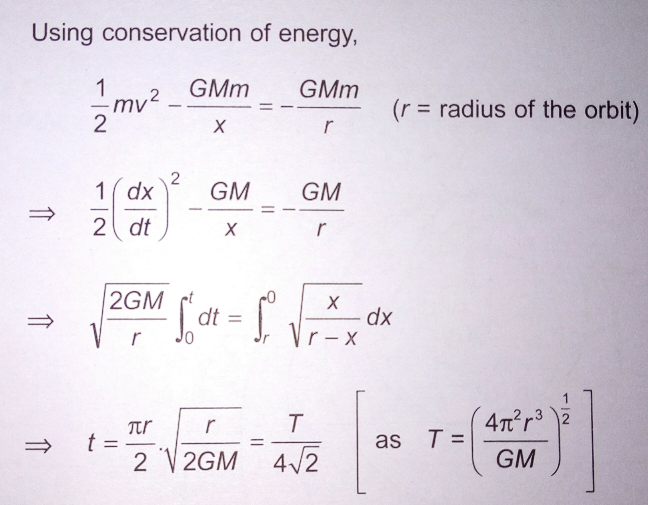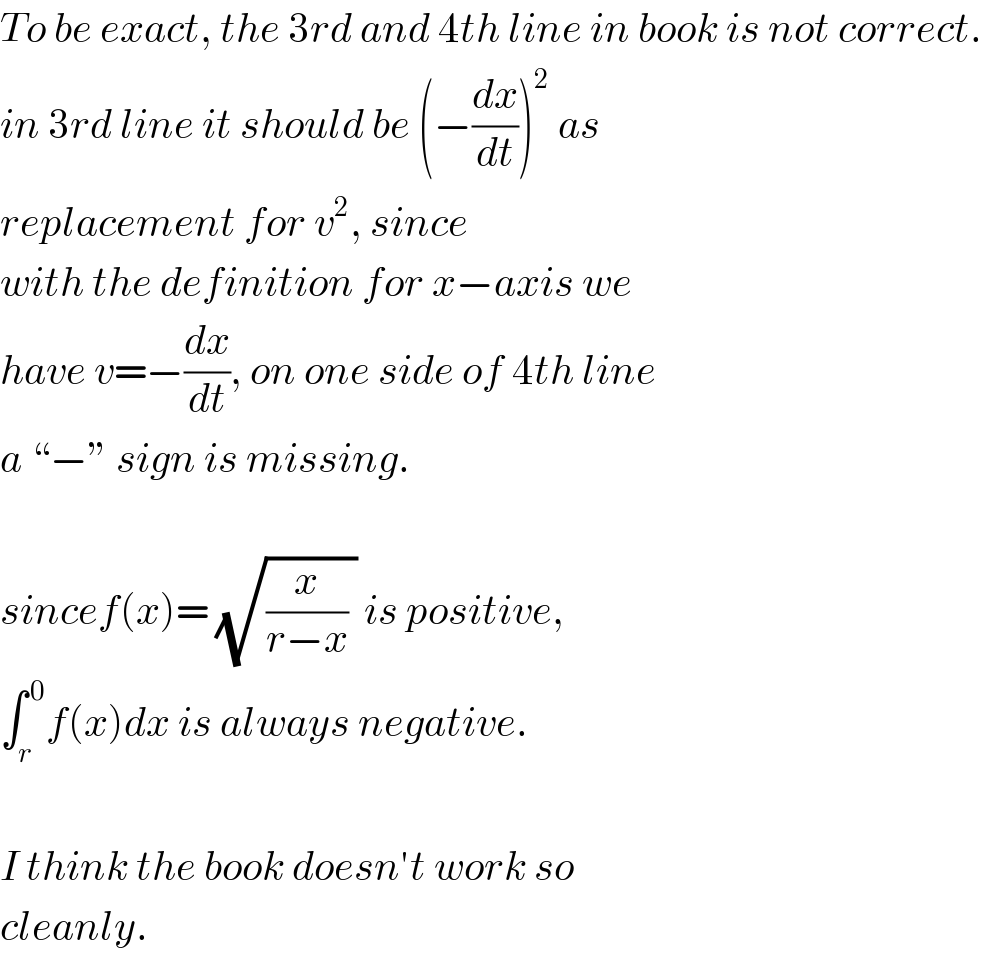
Question and Answers Forum
Question Number 27445 by Tinkutara last updated on 07/Jan/18

Answered by mrW1 last updated on 07/Jan/18
![Gravitation force between planet and sun: F=((GMm)/L^2 ) with M = mass of sun m = mass of planet L = distance between them F=((mv^2 )/L)=((GMm)/L^2 ) ⇒v=(√((GM)/L))=velocity of planet in orbit T=((2πL)/v)=2πL(√(L/(GM))) free fall of planet into sun from height x= L to 0: F(x)=((GMm)/x^2 )=ma ⇒a=((GM)/x^2 )=−v(dv/dx) ⇒vdv=−GM (dx/x^2 ) ⇒∫_0 ^( v) vdv=−GM ∫_L ^( x) (dx/x^2 ) ⇒(1/2)v^2 =GM((1/x)−(1/L))=((GM(L−x))/(Lx)) ⇒v=(√((2GM)/L)) (√((L−x)/x))=−(dx/dt) ⇒−(√((2GM)/L)) dt=(√(x/(L−x))) dx ⇒−(√((2GM)/L)) ∫_0 ^( T_1 ) dt=∫_L ^( 0) (√(x/(L−x))) dx ⇒−(√((2GM)/L)) T_1 =[−(√(x(L−x)))−L tan^(−1) (√((L−x)/x))]_L ^0 =−((Lπ)/2) ⇒T_1 =((πL)/2)×(√(L/(2GM)))=(1/(4(√2)))×2πL (√(L/(GM))) ⇒T_1 =(T/(4(√2)))](Q27455.png)
Commented by Tinkutara last updated on 07/Jan/18
How do you solved the integral? As in question 27400 it is giving another answer.
Commented by mrW1 last updated on 07/Jan/18
![I=∫_L ^( 0) (√(x/(L−x))) dx =L∫_L ^( 0) (√((x/L)/(1−(x/L)))) d(x/L) =L∫_1 ^( 0) (√(λ/(1−λ))) dλ with λ=(x/L) let (1/t)=(√(λ/(1−λ))) ⇒1−λ=t^2 λ ⇒λ=(1/(1+t^2 )) dλ=−((2t)/((1+t^2 )^2 )) ∫(√(λ/(1−λ))) dλ=−2∫(1/((1+t^2 )^2 ))dt =−2[(t/(2(1+t^2 )))+(1/2)tan^(−1) t] =−(t/(1+t^2 ))−tan^(−1) t =−(√(λ(1−λ)))−tan^(−1) (√((1−λ)/λ)) =−(√((x/L)(1−(x/L))))−tan^(−1) (√((1−(x/L))/(x/L))) =−(1/L)(√(x(L−x)))−tan^(−1) (√((L−x)/x)) I=∫_L ^( 0) (√(x/(L−x))) dx =[−(√(x(L−x)))−L tan^(−1) (√((L−x)/x))]_L ^0 =−((Lπ)/2)](Q27462.png)
Commented by Tinkutara last updated on 07/Jan/18

Commented by Tinkutara last updated on 07/Jan/18
This was book's solution. Where is mistake here then? The integral comes out negative but here it shows positive.
Commented by mrW1 last updated on 07/Jan/18

